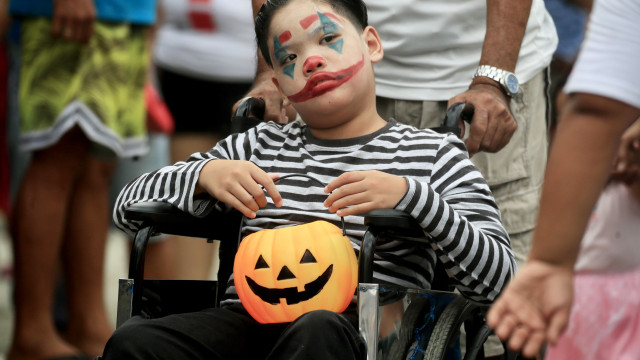On the last day of October in the USA and most of the world, people celebrate Halloween - pumpkins are carved, costume parties are organized, fireworks dash through the sky, young and old play tricks, tell scary stories and go around for treats. In recent years, the Halloween mood has conquered Bulgaria as well, despite the divergent opinions on the subject and the never-ending contrast with Bulgarian holidays and traditions.
Halloween costumes usually copy themes of supernatural figures such as monsters, ghosts, skeletons, witches and demons. Over time, costumes of popular characters from science fiction films, of famous people, ninja and princess costumes are also very popular. The interesting thing is that traditionally people in Ireland and Scotland carved turnips, remembering in this way the souls kept in purgatory. But the immigrants in North America started to use the pumpkin, which is much bigger and therefore - more convenient to carve.
Black and orange are the traditional colors of the holiday. Apart from masking, this day also emphasizes the consumption of sweet cupcakes, in the shape of scary figures, as well as lots of candies.
The origin of the holiday is related to the ancient Celts. They celebrated their New Year - Samhain at the end of October, when they harvested their last harvest. They believed that on the night before the New Year, the border between the dead and the living opens and the shadows of those who died during the past year haunt the earth, looking for living bodies to inhabit.
To protect themselves from the shadows, people put out the fire in the hearths and tried to look as scary as possible - they dressed up in animal skins and heads, hoping to scare away the apparitions. They left food for the spirits, so that they would feed themselves and not insist on entering their homes. And the inhabitants themselves gathered around fires that were lit by the Druid priests. At these gatherings predictions were made for the winter and animals were sacrificed. At the end of the gathering, everyone took coal from the fire and lit their hearth with it.
In 853 AD Pope Gregory IV confirmed October 31 as the day of All Saints, a day for the celebration of all Christian saints and martyrs, which in the countries with a large Celtic population naturally coincided and mixed with the traditionally existing pagan holiday.
According to legend, the Halloween pumpkin is connected to the story of a villager named Jack the Blacksmith or Squeezed Jack, and hence the pumpkin lantern is called a jack-o-lantern or Shining Jack.
A curious fact is that fears are embedded in our DNA and are passed down from generation to generation as a survival mechanism.
On Halloween, overcome your fears and try to scare as many people as possible. /BGNES







